“It’s like Mounjaro—but made with ancient Japanese wisdom.”
That’s the buzz floating around Reddit, TikTok, and wellness groups in 2025—and I was skeptical too. But after trying the natural Japanese Mounjaro recipe, I finally understood why so many are calling it the side-effect-free, hormone-balancing fat burner we’ve all been waiting for.
Rooted in traditional Japanese ingredients like matcha, umeboshi, and yuzu, this drink taps into your body’s natural rhythm, mimicking the effects of the GLP-1 hormone (the one behind Mounjaro and Ozempic). No prescriptions, no pins—just a simple, deeply healing elixir you can whip up in minutes.
In this guide, I’ll walk you through how to make it, why it works, and what makes the Japanese version uniquely powerful—especially for women over 40 looking to reset digestion, curb cravings, and drop stubborn fat naturally.
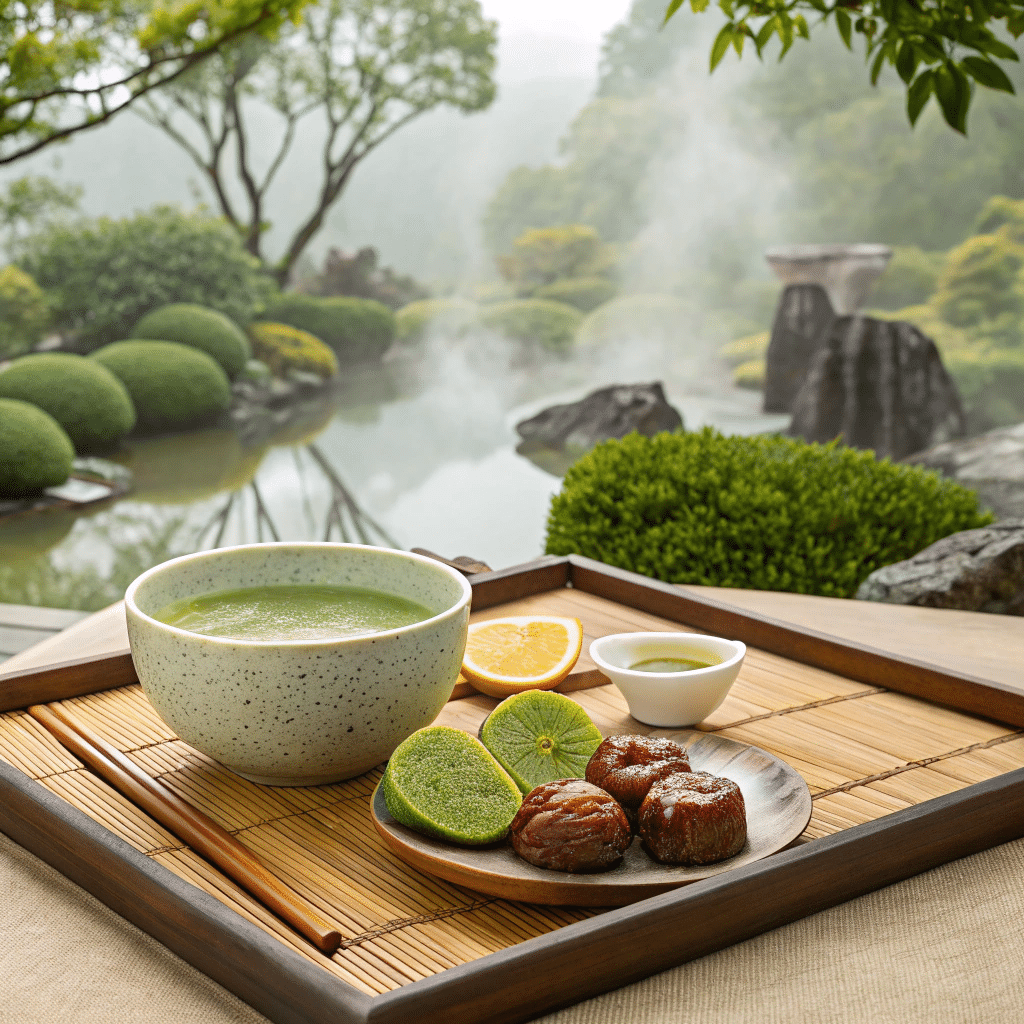
Table of Contents
Table of Contents
What Is the Natural Japanese Mounjaro Recipe?
So let me just say it straight: when I first heard about the natural Japanese Mounjaro recipe, I rolled my eyes so hard I nearly sprained something. I mean, really? Another trendy “skinny tea” making the rounds? But after digging in, testing it myself, and (yes) drinking it daily for three weeks—I have to admit, there’s more to this than hype.
From Ancient Pantry to Viral Detox
The origin of this drink goes deep—like generations back into traditional Japanese wellness practices. But here’s the twist: folks are taking ancient superfoods like matcha, umeboshi (fermented plums), and yuzu, and using them in ways that mimic modern weight-loss medications—without the synthetic stuff.
What hooked me was the idea that this wasn’t a crash diet drink. It’s more like a gentle reset. These ingredients have been used in Japan for digestion, fat metabolism, and immune health for centuries. They didn’t know what GLP-1 was back then, but they sure knew how to work with the body instead of against it.
How It Mimics GLP-1—Without the Shot
Now here’s where it gets juicy (no pun intended). GLP-1 is a hormone that helps regulate blood sugar and makes you feel fuller longer. That’s the same hormone targeted by meds like Mounjaro and Ozempic. But instead of injections, this natural Japanese Mounjaro drink nudges those same pathways using real food.
Matcha, for example, isn’t just caffeine in a green disguise. It slows digestion, improves insulin sensitivity, and gently curbs appetite. Umeboshi plums? Sour little gut-balancing bombs. They help with stomach acid, reduce bloating, and—I swear—cut sugar cravings like magic. I was a daily nighttime snacker, and this drink legit helped me break the habit.
East vs. West: A Taste and Philosophy Shift
If you’ve tried the Western version (you know, the apple cider vinegar–lemon–cinnamon–ginger blend), you’ll notice a huge difference in flavor. The Western recipe feels like a punch in the face, while the Japanese Mounjaro version is… kind of calming? Bitter, sure. But more balanced. Less “detox boot camp,” more “zen reset.”
Culturally too, the approach is different. Western versions tend to go hard—burn fat fast, cut carbs, track everything. The Japanese mindset is more like: support the body, balance digestion, be consistent. And honestly, that’s been the biggest mindset shift for me. I’m not chasing instant results anymore. I’m nourishing, not punishing.
Practical Tip:
If you’re curious but hesitant, start with a diluted cold brew version. Just matcha, yuzu juice (or lemon if you can’t find it), and a slice of pickled plum in cold water. Try it before breakfast. You might be surprised.
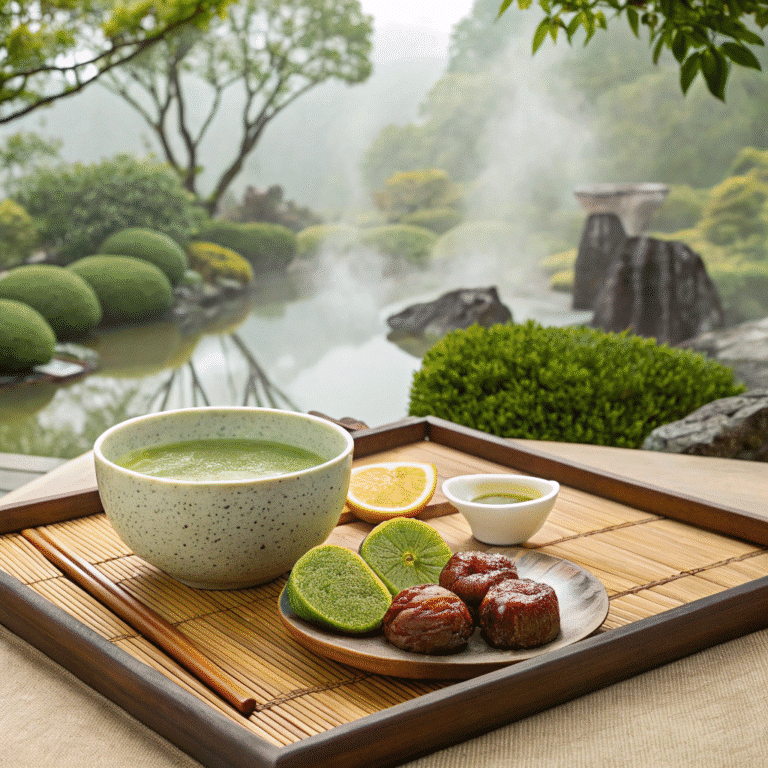
Natural Japanese Mounjaro Recipe 2025
A calming and metabolism-supporting Japanese detox drink using matcha, umeboshi, and yuzu—designed to mimic GLP-1 effects naturally.
- Total Time: 5 minutes
- Yield: 1 serving 1x
Ingredients
- 1/2 tsp matcha powder
- 1/2 tsp yuzu juice (or lemon)
- 1 small umeboshi plum, pitted and chopped
- Optional: 1 slice fresh ginger, pinch of kelp flakes, or 1 shiso leaf
- 8 oz water (hot or cold)
Instructions
- Boil 8 oz of water and let it cool for 1 minute to preserve matcha’s flavor and nutrients.
- Whisk matcha with a small amount of warm water until smooth.
- Add yuzu juice, chopped umeboshi plum, and optional add-ins like ginger or kelp.
- For hot version: stir well and sip slowly before breakfast.
- For cold version: combine all in a jar or shaker with cold water, shake or stir well, add ice and enjoy.
Notes
Start with a lower dose if you have a sensitive stomach. Use quality matcha and umeboshi for best results. Ideal as a morning reset drink.
- Prep Time: 5 minutes
- Cook Time: 0 minutes
- Category: Drink
- Method: Mixed
- Cuisine: Japanese
Nutrition
- Serving Size: 1 glass
- Calories: 25
- Sugar: 1g
- Sodium: 150mg
- Fat: 0g
- Saturated Fat: 0g
- Unsaturated Fat: 0g
- Trans Fat: 0g
- Carbohydrates: 3g
- Fiber: 0g
- Protein: 1g
- Cholesterol: 0mg
Key Ingredients and Their Benefits
When I first started using the natural Japanese Mounjaro recipe, I had no idea how powerful the ingredients would be. I just wanted something gentle, something that didn’t wreck my gut like every other “fat-burning tea” I’d tried before. But this recipe? It’s built around ingredients that actually do something—and you can feel it.
Matcha: Smooth Energy + Blood Sugar Support
One of the main reasons the natural Japanese Mounjaro recipe works so well is because of matcha. I’ve replaced my morning coffee with this green tea powder, and I haven’t looked back. Matcha doesn’t just give me a little boost—it helps increase fat burning and balances blood sugar, which has made a huge difference in my snacking habits.
Honestly, I never thought a drink could keep me full longer, but that’s what matcha does. When it’s part of the natural Japanese Mounjaro recipe, I feel sharper and less hangry by 10 a.m. Total win.
Umeboshi Plum: Craving Control + Gut Reset
The first time I tried umeboshi, I made a face. It’s super sour, kind of salty, and totally unique. But wow—it’s a digestion powerhouse. I used to get bloated every afternoon like clockwork, but once I added umeboshi into my daily natural Japanese Mounjaro recipe, things calmed down. No more belly bloat, and fewer sugar cravings too.
Umeboshi is rich in organic acids that promote healthy digestion and suppress appetite. It’s like a secret weapon—especially if you’re trying to stop late-night snacking (been there, done that).
Yuzu Juice: Citrus Detox with a Kick
Next up: yuzu juice. Think of it like lemon’s fancy cousin. It adds this light citrusy tang to the natural Japanese Mounjaro recipe that makes the whole drink way more enjoyable. But it’s not just for flavor—it’s packed with vitamin C, helps detox the liver, and supports metabolism. I swear I wake up less puffy when I drink it regularly.
Even better? Yuzu has compounds that help relax the body. That’s why I love having the cold version of the natural Japanese Mounjaro recipe on stressful days.
Optional Add-Ins That Pack a Punch
Depending on your goals, you can mix in other metabolism-friendly ingredients. I’ve played around with:
- Konbu (kelp) – adds minerals and supports thyroid health
- Fresh ginger – gives a warming effect and helps reduce inflammation
- Shiso leaf – cooling, refreshing, and great for balancing internal heat
All these add-ons just level up the natural Japanese Mounjaro recipe without complicating it. You can rotate them based on your needs or just what’s in your fridge.
Pro Tip:
When I make a cold version for summer, I steep the umeboshi and konbu overnight. The flavor deepens, and it feels like something you’d get at a spa in Kyoto.
Read: Natural Mounjaro Recipe
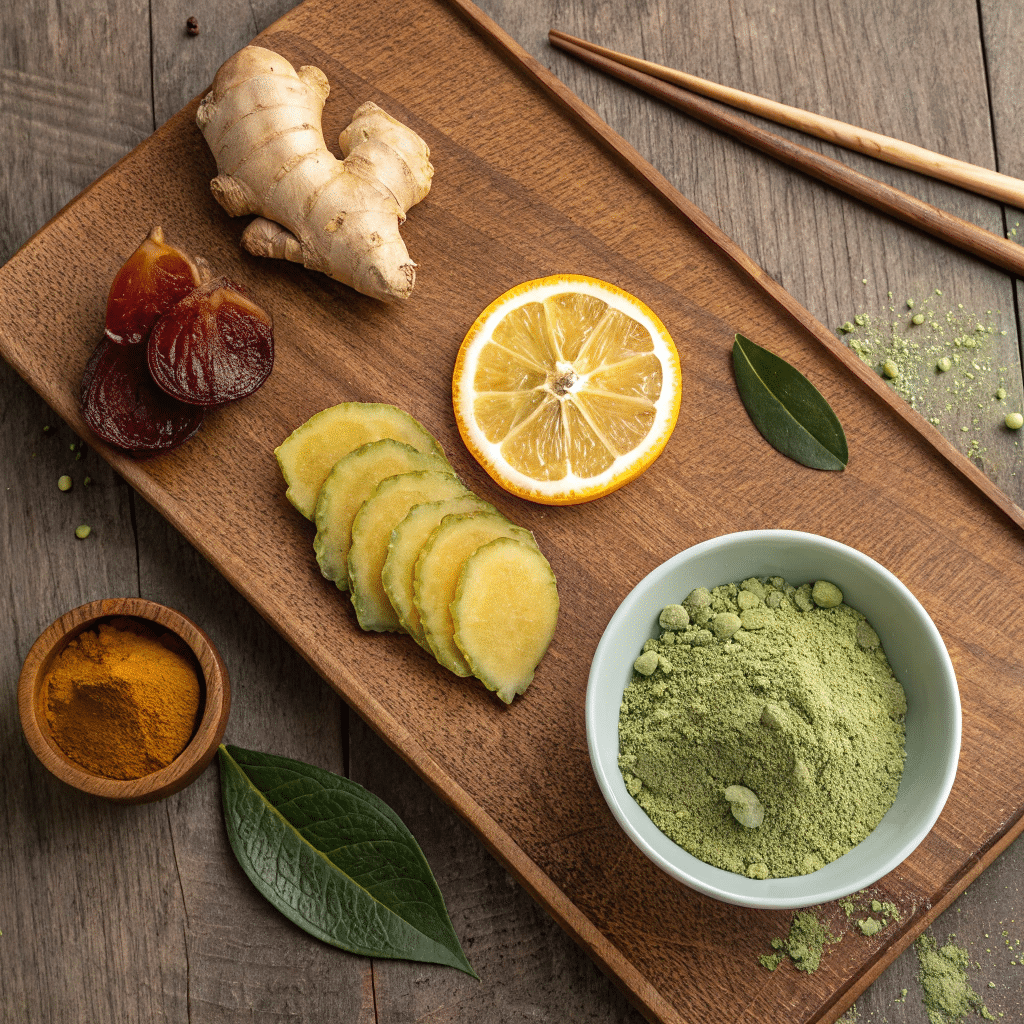
How to Make the Natural Japanese Mounjaro Recipe (Hot and Cold Versions)
If you’re anything like me, you want something that’s easy to make, doesn’t taste like punishment, and actually does something for your body. That’s exactly why I fell in love with the natural Japanese Mounjaro recipe—and why I keep it in my daily routine now. Whether it’s a chilly morning or a hot afternoon, there’s a version of this drink that fits the mood and still gives you that gentle metabolic nudge.
Ingredients and Measurements (1 Serving)
Here’s what you’ll need to make a single serving of the natural Japanese Mounjaro recipe:
- 1/2 tsp matcha powder
- 1/2 tsp yuzu juice (or lemon if you can’t find it)
- 1 small umeboshi plum (pitted and chopped)
- Optional: 1 slice fresh ginger, pinch of kelp flakes, or 1 shiso leaf
- 8 oz water (hot or cold)
That’s it. No fancy supplements. Just pantry staples in a lot of Japanese homes.
Hot Tea Version (My Morning Reset)
For mornings—especially colder ones—the hot version of the natural Japanese Mounjaro recipe is a dream. It’s warming, calming, and somehow makes me feel grounded for the day.
How to make it:
- Boil 8 oz of water and let it cool for 1 minute (so you don’t burn the matcha).
- Whisk the matcha with a bit of warm water until smooth.
- Add yuzu juice, chopped umeboshi, and any extras like ginger or kelp.
- Stir, sip slowly, and enjoy before breakfast.
I usually drink it on an empty stomach. That’s when the magic happens—less bloating, fewer cravings, and a more stable mood through the morning.
Cold Tonic Version (Perfect for Warm Weather)
On hot days? I go straight for the iced version of the natural Japanese Mounjaro recipe. It’s tart, a little salty, and weirdly refreshing. Think spa water… but with a serious upgrade.
How to make it:
- Add all the ingredients to a mason jar or shaker bottle with cold water.
- Shake it up or stir well (matcha dissolves better if pre-whisked).
- Toss in some ice, maybe a few mint leaves, and sip on the go.
Bonus: This one doubles as a great in-between-meals drink. I sometimes reach for it when I’d usually crave something sweet around 3 p.m.—and honestly, it keeps me on track.
Tips for Batch Prep and Daily Use
- Make a concentrate: Whisk a double or triple batch of matcha and umeboshi in a jar and refrigerate. Just add water when you’re ready to drink.
- Use yuzu juice concentrate: It lasts longer and you’ll always have it on hand.
- Freeze extras: You can freeze matcha + yuzu cubes and just pop one in water with your plum for a fast fix.
I try to prep two days ahead when I know I’m going to be rushed, and I always keep a small jar of the concentrate in the fridge.
Real talk:
The first time I made this, I dumped in too much matcha and forgot to pit the plum. It tasted like seaweed soup with a lemon chaser—not my proudest moment. But once I got the balance right? Game-changer.
Bottom line: the natural Japanese Mounjaro recipe is totally adaptable, and once you find your sweet spot—hot or cold—you’ll start looking forward to it like your favorite cup of tea.
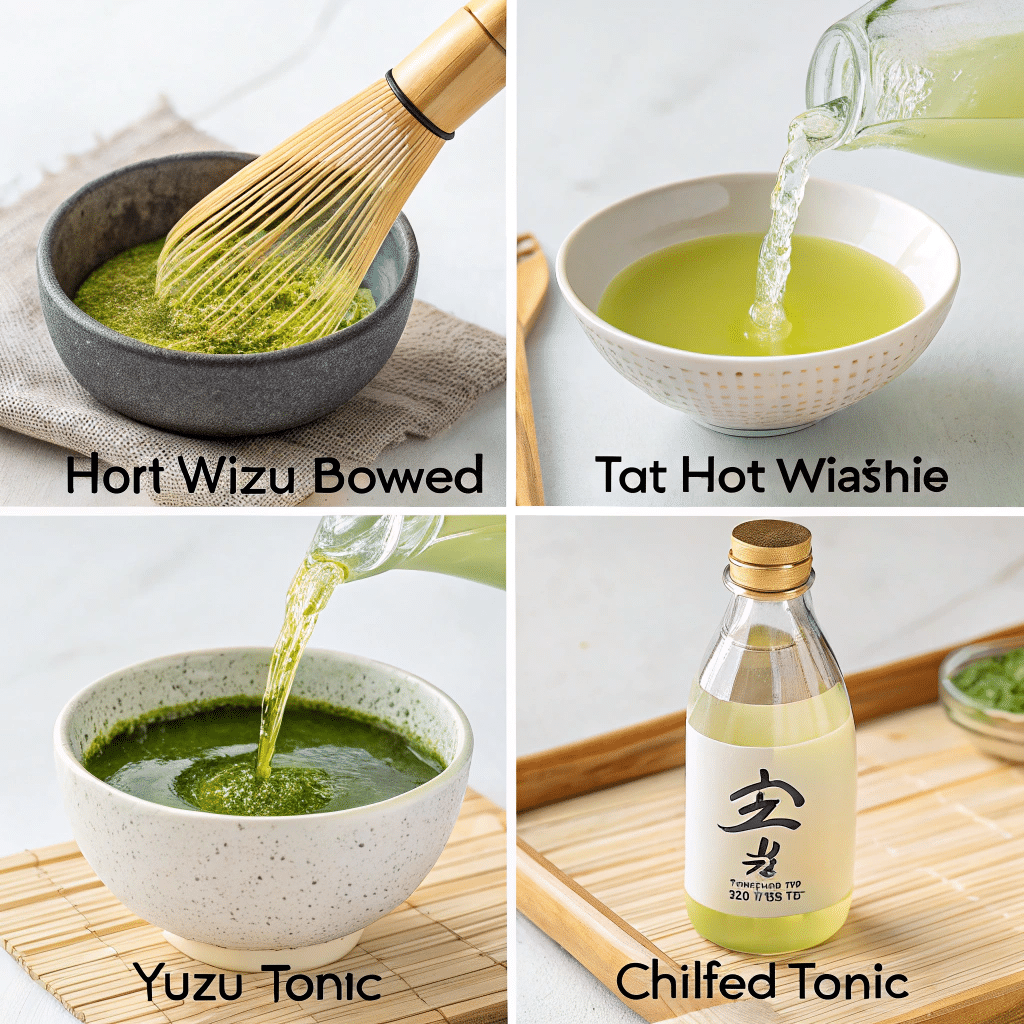
How It Works in the Body (Science Behind the Sip)
The first time I heard someone say the natural Japanese Mounjaro recipe “works like Ozempic,” I laughed out loud. Like, how is a plum and some matcha supposed to do what a prescription injection does? But the more I looked into it—and felt the changes in my own body—the more I realized there’s some truth behind that dramatic claim.
Now, is it exactly the same? No. But here’s the fascinating part: this drink actually does work on some of the same hormonal pathways, especially when it comes to appetite control, digestion, and energy regulation.
Mimics GLP-1 (Sort Of)
Let’s start with the big one: GLP-1, aka the hormone behind meds like Mounjaro and Wegovy. GLP-1 helps you feel full longer, slows down how quickly food moves through your stomach, and keeps your blood sugar from spiking.
The natural Japanese Mounjaro recipe doesn’t contain GLP-1, obviously—but it taps into the same system. Matcha, for instance, slows gastric emptying and improves insulin sensitivity. That means fewer spikes and crashes… and fewer “OMG I need a donut” moments.
I noticed this within three days. I used to feel ravenous by 11 a.m., but with this drink, I could go till lunch without obsessing over snacks.
Digestion & Thermogenesis: The Fire Inside
This part sold me: umeboshi and ginger (if you add it) stimulate your digestive enzymes and encourage thermogenesis—which is just a sciencey way of saying your body burns a little more fat turning food into energy.
When I drink the natural Japanese Mounjaro recipe on an empty stomach, it kind of wakes my gut up. I feel lighter. Less sluggish. It’s subtle, but it’s real.
Gut Balance & Inflammation Control
Here’s something I didn’t expect: the bloating I’ve had for years just… faded. A big part of that is umeboshi, which promotes healthy gut bacteria and helps balance stomach acid. The anti-inflammatory properties in matcha and yuzu juice also support your immune system and keep your gut from freaking out after every meal.
Honestly, it made me realize how inflamed I’d felt before. Not dramatic, just puffy, tired, always a little off. Now, my digestion feels smoother—and my mood’s improved too. (Gut-brain connection is real, y’all.)
Not a Miracle—But a Metabolic Nudge
Let me be clear: the natural Japanese Mounjaro recipe isn’t magic. You’re not going to drop 10 pounds in a week. But that’s kind of the point—it works with your body, not against it. It gives your metabolism a nudge, not a shove.
And the best part? It doesn’t mess with your hunger hormones or cause weird side effects like jitters, nausea, or insomnia. It’s gentle, sustainable, and honestly… kind of calming.
Little Tip:
Try journaling how you feel after a week of drinking it daily. For me, it was better sleep, fewer cravings, and that satisfying feeling of finally being in sync with my body again.

Who Should (and Shouldn’t) Try It
Let’s get real—just because something’s natural doesn’t mean it’s right for everyone. I learned that the hard way during week one of testing the natural Japanese Mounjaro recipe when I went all-in with too much matcha and plum… and let’s just say, my stomach was not impressed.
So here’s the breakdown of who this drink tends to work best for—and who should maybe proceed with a little caution (or tweak it a bit).
Ideal for Women 40+ (Especially If Hormones Are All Over the Place)
If you’re over 40 and feel like your body’s been stuck in slow motion—especially when it comes to digestion, energy, or midsection weight gain—this recipe is a gentle but powerful support tool. The natural Japanese Mounjaro recipe helps stabilize blood sugar, calms down cravings, and supports healthy digestion without putting stress on your system.
I’ve had friends tell me it helped ease their PMS and post-meal crashes. Personally, I noticed fewer snack attacks and more regular digestion within just a few days.
When You Shouldn’t Drink It (Or Need to Be Careful)
Alright, here’s the no-BS list of who should hold off or talk to their doctor first:
- GERD or acid reflux sufferers: yuzu and umeboshi can aggravate symptoms
- Ulcer issues: the acidity in plum and citrus may make it worse
- Pregnancy: fermented plums and strong herbs aren’t always pregnancy-safe
- Thyroid meds: kelp (if you use it) contains iodine, which may interfere
I’m not saying it’s dangerous—it’s just strong in a gentle way. If you’ve got a sensitive stomach or a health condition, it’s worth easing in slowly.
Adjustments for Sensitive Digestion
So if your gut’s a little on the fussy side (same here), here’s how to modify the natural Japanese Mounjaro recipe:
- Use less matcha—start with 1/4 tsp
- Skip the ginger if it feels too spicy
- Dilute the umeboshi—steep it in warm water first, then strain
- Try it after a light meal instead of on an empty stomach
I had to play around for a few days before finding the combo that didn’t leave me bloated or queasy. Everyone’s different, so give yourself grace to experiment.
How to Safely Test Your Tolerance
This part’s important. When I first tried the natural Japanese Mounjaro recipe, I made the rookie mistake of chugging a full-strength glass first thing in the morning. Yeah… no.
Here’s what I recommend:
- Start small—use half the ingredients for your first try
- Watch how you feel for the next few hours
- Try it 2–3 times that week, spaced out
- Build up to daily use if everything feels good
You’ll know pretty quickly if your body likes it. And honestly? Most people just feel a little more “in balance” after a few days—less bloated, less snacky, more clear-headed.
Side note:
One friend of mine couldn’t handle the umeboshi at all. She swapped it for a splash of rice vinegar and still saw benefits. So don’t be afraid to customize it to what works for you.

Tips for Best Results with the Japanese Mounjaro Recipe
Once you’ve got the natural Japanese Mounjaro recipe down, the real magic comes from how and when you use it. This isn’t some trendy drink you try once and forget about. It’s more like a slow-burn habit that stacks little wins—day after day—until suddenly, your jeans fit better and your cravings don’t control your day.
That said, it took me a little trial and error to get it right. So here are the tips I wish someone had told me when I first started using the natural Japanese Mounjaro recipe.
1. Drink It on an Empty Stomach (Morning Is Gold)
Hands down, drinking it first thing in the morning gave me the best results. I sip the hot version of the natural Japanese Mounjaro recipe while my house is still quiet. Not only does it wake up my digestion, but it also helps stabilize my appetite through lunchtime.
When I’ve tried drinking it later in the day, it still worked—but the hunger control wasn’t quite as strong. There’s just something about starting the day with this combo of matcha, yuzu, and umeboshi that sets your metabolism up right.
2. Pair It with Movement (Even Just a Walk)
This drink helps nudge your metabolism, but I noticed the effects multiplied when I followed it with a little movement. Nothing crazy—just a 20-minute walk or some slow yoga. It’s like it signals my body, “Hey, we’re up and running!”
One week, I skipped the movement piece completely… and I plateaued. As soon as I added even light stretching back in? Progress picked up again.
3. Eat Japanese-Style for Better Synergy
You don’t have to overhaul your diet, but if you really want to amplify the benefits of the natural Japanese Mounjaro recipe, try pairing it with Japanese-style meals.
I started incorporating simple miso soup, steamed fish, and seaweed salad into lunch or dinner—and I swear it just clicked. The food is naturally low-inflammatory and easy on digestion, which complements what the drink is already doing in your system.
Plus, the flavors actually pair well with the drink itself. Win-win.
4. Track Your Results (You’ll Be Surprised)
I’ll be honest—I used to think tracking was annoying. But when I started jotting down how I felt each morning after drinking the natural Japanese Mounjaro recipe, I started noticing patterns: better energy, fewer cravings, deeper sleep.
Here’s what I tracked weekly:
- Cravings (scale of 1–10)
- Bloating or digestion discomfort
- Energy levels
- Weight (but only if it felt encouraging, not obsessive)
Some weeks, the changes were subtle. But over a month? My body felt totally different—lighter, calmer, more consistent.
Bonus Tip:
Make it a ritual, not a chore. Light a candle. Drink it in silence. Take a walk afterward. The natural Japanese Mounjaro recipe works best when it’s part of a bigger self-care vibe—not a rushed “ugh, I forgot to drink my thing” moment.
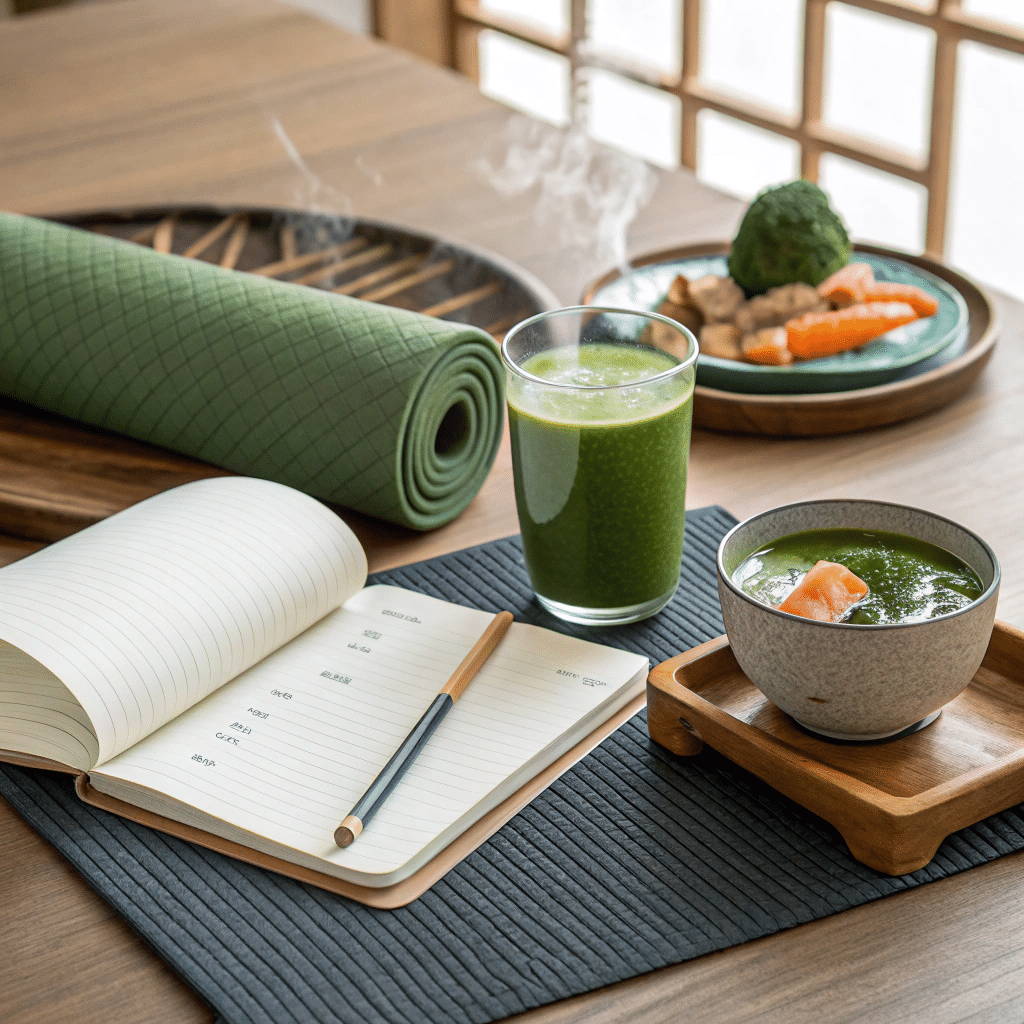
Conclusion
The natural Japanese Mounjaro recipe isn’t a quick fix—it’s a powerful daily ritual steeped in tradition and science. With ingredients that support your metabolism, gut, and cravings, it’s a gentle yet effective way to honor your body’s rhythms. Whether you’re trying to shed stubborn weight or simply feel more in tune with your digestion, this drink is worth a try.
If you found this guide helpful, share it on Pinterest and spread the word about this ancient weight-loss secret making waves in 2025!

FAQs – Natural Japanese Mounjaro Recipe
What is the natural Japanese Mounjaro recipe?
The natural Japanese Mounjaro recipe is a DIY wellness drink inspired by GLP‑1 medications (like Mounjaro) but made from traditional Japanese ingredients: matcha, umeboshi plum, yuzu juice, and sometimes konbu or ginger. Unlike Western versions with lemon and vinegar, it’s rooted in ancient Japanese detox practices.
How does the natural Japanese Mounjaro recipe differ from the standard “natural Mounjaro” drink?
Most viral versions use lemon, ginger, honey, and sometimes apple cider vinegar—but the natural Japanese Mounjaro recipe swaps these for matcha, umeboshi, kombu, and fresh ginger, giving unique benefits like probiotic support, metabolism boost, and rich antioxidants.
Does the natural Japanese Mounjaro recipe actually help with weight loss?
There’s no clinical evidence that this drink alone causes major weight loss. However, the natural Japanese Mounjaro recipe may support digestion, hydration, and mild metabolism boost through its ingredients (catechins in matcha, citric acid from umeboshi, ginger’s thermogenesis). Combined with a balanced diet and activity, it could aid gradual results.
How often should I drink the natural Japanese Mounjaro recipe?
Most guides suggest a single serving per day, preferably in the morning on an empty stomach. Steer clear of extra servings later in the day if you’re sensitive to matcha’s caffeine or drunk heavy kelp-based mineral versions—stick with one morning ritual to start.
Is the natural Japanese Mounjaro recipe safe for everyone?
Generally, the natural Japanese Mounjaro recipe is considered safe for healthy adults. Still, individuals with GERD, ulcers, pregnancy, thyroid conditions, or high sodium or iodine sensitivity should consult a healthcare provider before trying it.
What can I add or remove from the natural Japanese Mounjaro recipe to suit my taste or needs?
You can modify the drink based on your gut tolerance or flavor preferences—reduce matcha for less caffeine, dilute or omit umeboshi if sourness is too strong, skip kombu if you’re sensitive to iodine, or pick fresh ginger to ease digestion. These tweaks keep it gentle yet effective.
Can the natural Japanese Mounjaro recipe mimic GLP-1 medications like Mounjaro?
No, it doesn’t contain GLP‑1 agonists. But its ingredients may influence similar pathways: matcha slows digestion and balances blood sugar, umeboshi helps gut health, and ginger supports metabolism. Still, it’s no pharmaceutical alternative—just a gentle support for appetite and digestion.
Will the natural Japanese Mounjaro recipe reduce belly fat quickly?
It won’t melt belly fat overnight. However, it may reduce bloating, support hydration, and gently nudge metabolism when used consistently with lifestyle changes. Think of it like a flavorful morning ritual—not a magic solution.


